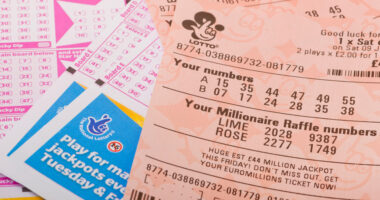THE postcodes that saw the biggest house price rises in 2020 have been revealed, with more than a million pounds added to the value of homes in some areas.
On average, house prices fell by 0.3% in January, according to latest figures from Halifax, with average property value currently standing at £251,968.
The drop comes after a mini-boom in the housing market in 2020 following the Chancellor’s stamp duty holiday.
Now, the Mirror has revealed the postcodes where values have risen – and fallen – the most over the past year using Land Registry data.
The research is based on average sale prices in areas in England and Wales.
Unsurprisingly, the area that saw the most cash added to property prices was SW1A in Westminster, London.
What help is out there for first-time buyers?
GETTING on the property ladder can feel like a daunting task but there are schemes out there to help first-time buyers have their own home.
Help to Buy Isa – It’s a tax-free savings account where for every £200 you save, the Government will add an extra £50. But there’s a maximum limit of £3,000 which is paid to your solicitor when you move. These accounts have now closed to new applicants but those who already hold one have until November 2029 to use it.
Help to Buy equity loan – The Government will lend you up to 20% of the home’s value – or 40% in London – after you’ve put down a 5% deposit. The loan is on top of a normal mortgage but it can only be used to buy a new build property.
Lifetime Isa – This is another Government scheme that gives anyone aged 18 to 39 the chance to save tax-free and get a bonus of up to £32,000 towards their first home. You can save up to £4,000 a year and the Government will add 25% on top.
Shared ownership – Co-owning with a housing association means you can buy a part of the property and pay rent on the remaining amount. You can buy anything from 25% to 75% of the property but you’re restricted to specific ones.
“First dibs” in London – London Mayor Sadiq Khan is working on a scheme that will restrict sales of all new-build homes in the capital up to £350,000 to UK buyers for three months before any overseas marketing can take place.
Starter Home Initiative – A Government scheme that will see 200,000 new-build homes in England sold to first-time buyers with a 20% discount by 2020. To receive updates on the progress of these homes you can register your interest on the Starter Homes website.
Properties sold with an average price tag of almost £3million, up £1,379,425 compared to the start of the year.
Homes in Surrey saw the second highest price rise, going up from £800,000 to £1,850,000 – a difference of £1,050,000.
Outside of the south east of England, house prices rose the most in the YO41 postcode of North Yorkshire.
On average, properties sold for £343,000 more than the year before, up to £700,000 from £357,000.
Houses in the capital of the north, Manchester, went up too, by an average of £270,000.
But not every area saw such huge gains – in fact, some saw big losses.
Homes in W1B, Westminster, London, saw prices fall by the most with a shocking £1,236,407 knocked off average sale prices. They fell to £1,577,500 from £2,813,907.
In Essex, house prices in the RM14 postcode dropped by £392,500, while those in E4 saw an average of £355,000 cut off the sale price.
Properties in the CF3 postcode of South Wales also saw prices drop by £305,000, down from £735,000 to £380,000.
What is stamp duty?
STAMP duty land tax (SDLT) is a lump sum payment anyone buying a property or piece of land over a certain price has to pay.
Up until July 8, most house-buyers in England and Northern Ireland had to pay stamp duty on properties over £125,000.
This was temporarily increased to £500,000 until March 31, 2021 in the government’s mini-Budget in July 2020.
The rate a buyer has to fork out varies depending on the price and type of property.
Rates are different depending on whether it is residential, a second home or buy-to-let, or whether you’re a first-time buyer.
The usual system in England for residential properties means:
- First-time buyers pay nothing on properties below £300,000 (and relief available on properties of up to £500,000)
- You pay nothing if the property costs below £125,000
- You pay 2% if it is worth between £125,001 and £250,000
- You pay 5% if between £250,001 and up to £925,000
- You pay 10% if it is between £925,001 and £1.5million
- You pay 12% on anything over £1.5million
For second homes or buy to let properties:
- 3% on purchases up to 125,000
- 5% on purchases between £125,001 and £250,000
- 8% on purchases above £250,001 and £925,000
- 13% on purchases above £925,001 and £1.5 million
- 15% on purchases above £1.5 million
It’s worth bearing in mind though that these figures are based on average sale prices and that they may rise if typically more expensive properties are being sold in 2020 compared to the year before.
But many industry experts believe pent up frustration following the first national lockdown accompanied by the stamp duty tax break has pushed up house prices overall.
However, many are also warning that prices are expected to plummet this year when the true impact of pandemic on the economy comes to light.
Halifax predicts prices to fall by between 2% and 5% this year, while Zoopla expects valuations to peak by 5% in February before slowing to 1% at the end of the year.
Unemployment is expected to rise when the furlough scheme ends and the housing market is predicted to slow after the stamp duty holiday is over, both on March 31.
Much of it depends on what Rishi Sunak reveals in the Spring Budget next month.

























